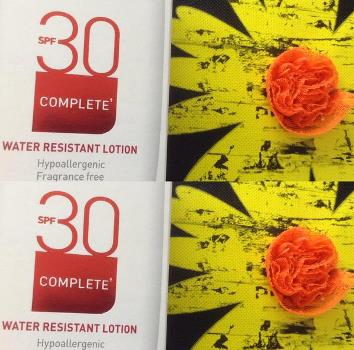
Photo by Tiffany
Everyone enjoys being able to spend more time outdoors when summer rolls around, and we are quite sure seniors no different. The interesting thing is, many seniors get to a point where they no longer believe taking preventative measures to safeguard their skin is important. Nothing could be further from the truth.
Did you know, as we age, our skin’s natural ability to protect itself slowly diminishes, leaving it more vulnerable to skin damage and cancer?
SEE ALSO: Grab Your Sunscreen As Summer is Here
UVB and UVA rays are hazardous to your health. UVB rays will cause sunburns as well as tanning your skin, not to mention they are the main culprits responsible for skin cancer. While UVA rays won't cause sunburn; they do penetrate your skin more deeply, leading to signs of aging including wrinkles, saggy, leathery looking skin, and sun spots.
Surprising facts.
Did you know that 80% of the sun’s damaging rays manage to filter through clouds? Don’t forget to apply the same liberal amount you would use on a completely clear day, to ensure you or your loved ones are staying sun-safe this summer.
In addition, many people believe that if they are clothed, they are protected. In actuality, most clothing protects only at an SPF 4 level. So with this in mind, be sure to protect even those parts of you that will be covered by clothes.
Steer clear of sun-tanning booths. Many people believe tanning booths are a safer way to get tan. This is not the case. The amount of UVA a person gets in a tanning booth is up to 10x more potent than what you’d receive from the sun.
Apply sunscreen under your makeup. Even if your makeup claims to have an SPF factor, be sure to apply sunscreen underneath. Makeup can crack or wipe away, leaving areas of your face exposed.
Check those labels.
When on the hunt for your new bottle of sunscreen this season, be sure to look over the labels closely. The FDA recently updated the rules applied to labeling sunscreens in 2013. Pay close attention to what the labels say and know their meaning.
• Broad-spectrum coverage. It’s important that your sunscreen protect you from both UVB and UVA rays, so look for bottles that say they offer “broad spectrum" protection.
• SPF. SPF stands for sun protection factor, which is basically a measure of how well the sunscreen deflects UVB rays (and only UVB). The SPF is calculated based on how long it takes to sunburn skin treated with sunscreen as compared with skin that hasn't been treated.
• Water Resistant. The FDA defines water-resistant sunscreens as ones where the SPF level stays effective after 40 minutes in the water. Very water resistant means it holds after 80 minutes of swimming. No sunscreen is 100% waterproof, so you'll need to reapply them regularly if you're taking a dip.
Steer clear of any sunscreens that have these ingredients in their label:
• Oxybenzone – studies have shown that it can be absorbed through the skin and enter the bloodstream; which can disrupt hormones, damage cells and ultimately lead to skin cancer anyway.
• Retinyl palmitate – studies have shown that this form of Vitamin A, when used on sun-exposed skin, could ultimately lead to an increased risk of skin cancer.
• Paraben – The jury is still out this one. Parabens mimic the hormone estrogen and as such, there is reason to be concerned that they may cause an increased chance of breast cancer since the chemical has been found in breast tumors.
Best bet.
According to the Environmental Protection Group (EPG), they recommend sunscreens in America that contain zinc oxide because it is a broad-spectrum sunscreen, which provides ample UVB and UVA protection.
From our selection of sunscreens, we recommend Ombrelle. Click here to order yours today.
Tips for staying sun-safe.
1. Apply sunscreen a minimum of 15 minutes before sun exposure.
2. Use a ping-pong ball size amount of sunscreen to cover your entire body.
3. Apply to easy-to-miss parts of your body; like the tops of your ears, your nose, the back of your legs, tops of your feet, and (if you have it) bald spot.
4. Reapply every 2 hours at a minimum.
5. Do not use sunscreens that are more than two years old.
6. Stay out of the sun as much as possible and avoid the most dangerous exposure hours of 10am - 4pm.
7. Use a wide-brimmed hat and sunglasses for more protection.
###
Carissa Andrews is an passionate author and freelancer from Minnesotan with a focus in creative writing.